Table of Contents
A SHORT AUDIO OF THE POST
Introduction
Are you sick of overspending on ineffective anti-aging products? These seven anti-aging secrets cut through the marketing hype for women over 40 who want natural, cost-effective ways to look younger.
Explore the simple movement technique that science has shown can reverse cellular ageing at the DNA level, learn which sleep position actually prevents wrinkles, and discover collagen-boosting foods that dermatologists rarely mention.
Collagen-Boosting Foods Dermatologists Don't Promote
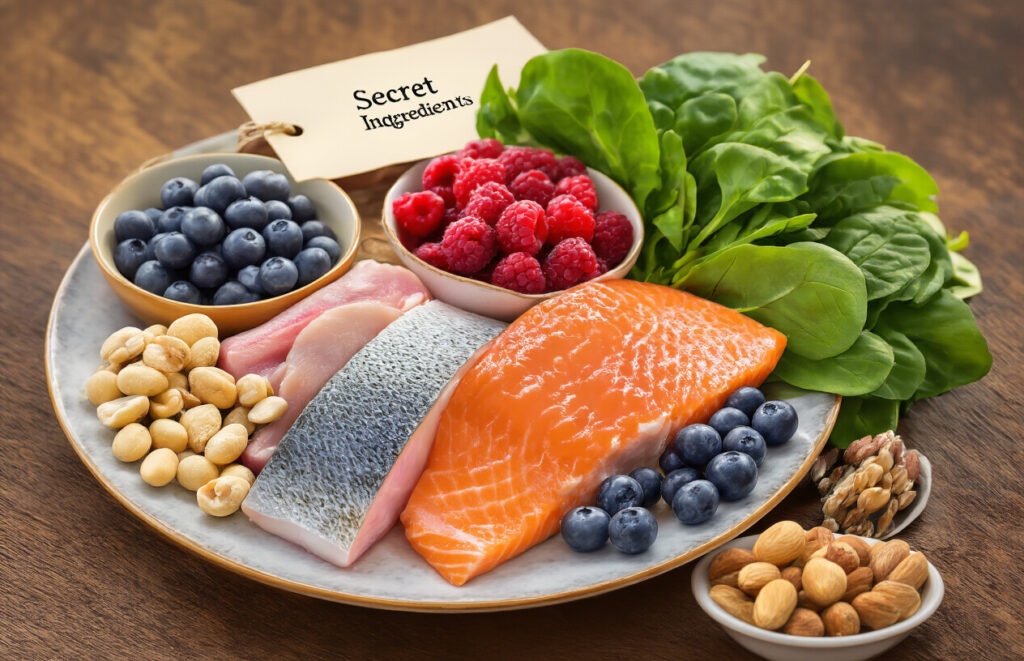
Collagen-Boosting Foods Dermatologists Don’t Promote
The true anti-aging magic takes place in your kitchen, but fancy creams and pricey treatments receive all the attention. With the correct diet, your body can naturally produce more collagen—something the beauty industry doesn’t want you to know.
B. Foods High in Sulphur That Restore Elasticity
Despite their unglamorous appearance, eggs, garlic, and onions are a great source of sulphur compounds, which are essential for the production of collagen.
Sulphur is used by your skin cells to form strong cross-links between collagen fibres, which is essentially what separates bouncy, taut skin from sagging, wrinkled skin.
Within a month, the sulphur in just two eggs for breakfast, three times a week, will significantly increase the firmness of your skin.
C. Effective Plant-Based Collagen Substitutes
Not a fan of animal products? No issue. Collagen can also be produced by your body from plant sources.
Vitamin C, which is necessary for collagen synthesis, is found in berries, citrus fruits, and bell peppers. They make the ideal collagen-building combination when combined with pumpkin seeds that are high in zinc and legumes that are high in protein.
The ingredient that’s kept a secret? Cucumbers and leafy greens contain silica, which activates the enzymes required to form collagen.
D. How Frequently to Eat These Foods to See Results
Here, consistency is more important than quantity. Consuming collagen-boosting foods on a daily basis is more effective than taking large doses of them occasionally.
A sulfur-rich breakfast or bone broth in the morning establishes a foundation. Serve vitamin C with berries or bell peppers for lunch. The daily cycle is completed with leafy green-based evening meals.
The majority of people experience firmer skin after three weeks, but the most noticeable changes occur between eight and twelve weeks, which is when pricey creams usually run out and need to be replaced. Is it a coincidence? Not in my opinion.
Affordable Alternatives to Expensive Anti-Aging Treatments

Ingredients in the Kitchen That Work Better Than Pricey Serums
Those high-end serums in attractive bottles? Complete waste of funds. You already have powerful anti-aging ingredients in your kitchen that are more effective than the pricey ones.
Raw honey contains enzymes that gently exfoliate your skin while drawing moisture in. It is a natural humectant. Simply apply a thin layer twice a week for 20 minutes. At a mere 1/50th of the price, it performs better than the majority of high-end moisturisers.
Lactic acid, the active component of many expensive chemical exfoliants, is also found in yoghurt. When it comes to eliminating dead skin cells and promoting cell turnover, the natural version is kinder but equally effective.
Green tea is more than just a beverage. When applied topically, its antioxidants are more effective than many designer serums at combating free radicals. Make a potent tea, let it cool, and then use it as a toner or facial mist.
Vitamin E in avocado oil is higher than that found in those small, pricey bottles. Apply a few drops to your skin at night, and you’ll wake up with that pricey “glow” for pennies.
How to Get the Same Results as a Professional Facial Massage at Home
What secrets do aestheticians keep from you? Not their “special” creams, but the massage itself, provides the majority of the facial benefits.
Every day, try this 3-minute routine:
- From the jawline to the cheekbones, gently press and roll upward with your knuckles.
- Using your fingertips, apply medium pressure in tiny circles to the temples.
- Trace under the eyebrows with your index fingers, moving outward.
Similar to those upscale facials, this promotes the production of collagen, eliminates puffiness by draining lymphatic fluid, and improves blood flow.
Put your thumbs beneath your jawline and firmly sweep them outward to create tension and definition in your jaw. To mimic the results of professional sculpting treatments, repeat this ten times every night.
The Rs20 Drugstore Product Outperformed High-End Brands in Effectiveness
In private, dermatologists acknowledge that petroleum jelly works better than nearly all of the priciest night creams available. According to studies, it improves skin water loss by over 98%, outperforming creams that cost 50 times as much.
Another unidentified victor? Glycerin, plain. This component serves as the primary active ingredient in a lot of those upscale “hydrating serums.” For instant plumping that rivals high-end brands, mix a few drops with water in a spray bottle.
The Sleep Position That Prevents Wrinkles
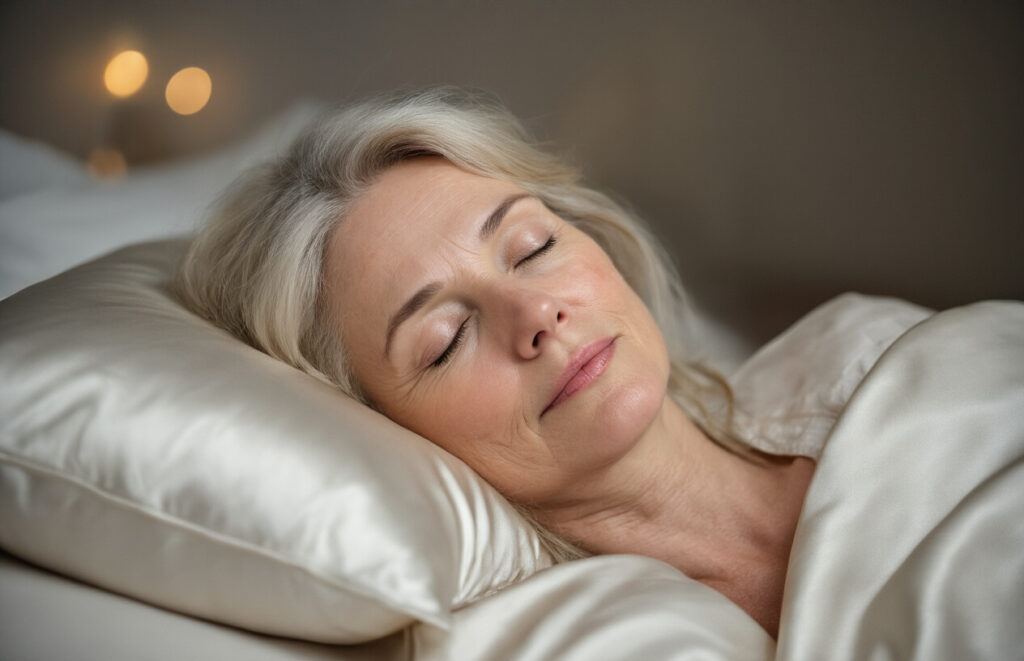
Why Sleeping on the Side and Stomach Hastens the Ageing of the Face
Were you aware that your preferred sleeping position could be contributing to wrinkles? Yes, your face is actually getting older every night while you’re in that comfortable side or stomach position.
Your face is pressed against the pillow for hours when you sleep on your stomach or side. Dermatologists refer to these annoying wrinkles that persist after you wake up as “sleep lines.” These transient wrinkles eventually become permanent features on your face.
Sleeping on your stomach causes wrinkles on your forehead and brow, while sleeping on your side primarily affects your cheeks and chin. In essence, it’s like spending six to eight hours every night ironing wrinkles into your skin.
Additionally, because the pressure limits blood flow to your skin, fewer nutrients will reach the cells that are attempting to heal themselves over night. Not ideal if you want to look younger.
How to Get Used to Sleeping on Your Back
Although switching to back sleeping is difficult, your face will appreciate it in the long run. Create a cosy sleeping space for your back first:
- Take a neck-supporting pillow that doesn’t force your head forward.
- To lessen the strain on your lower back, place pillows beneath your knees.
- To stop rolling, place pillows on both sides.
Try the “starfish position,” which involves spreading your legs slightly and raising your arms by your head. Back sleeping is naturally encouraged by this.
When you’re more aware of your position during daytime naps, start practicing. If you wake up in the middle of the night, set a reminder on your phone to check your position.
Have patience! It may take three to four weeks to form this habit. To keep their pyjama tops from rolling, some people sew tennis balls into the sides (sounds crazy, but it works amazingly).
Unique Pillows That Avoid Wrinkles Caused by Sleep
The number of effective anti-aging pillow options has skyrocketed:
Even if you roll over, silk pillowcases prevent sleep creases by reducing friction against your skin. An added bonus is that they are kinder to your hair.
Crescent-shaped pillows keep your face from being squashed by supporting your neck and providing room for it.
Regardless of position, the unique contours of JuveRest pillows reduce facial contact with any surface.
Side sleepers are accommodated by memory foam pillows with cutouts, which allow your cheek and ears to “float” instead of pressing against fabric.
When compared to pricey creams and treatments, these speciality pillows, which range in price from $30 to $200, are a great way to stop wrinkles before they start.
The Ideal Sleep Time for Cellular Repair
While you sleep, your skin literally heals itself. Your body produces more collagen, the wonder protein that keeps skin firm and bouncy, when you sleep deeply because it is releasing human growth hormone.
For the best cellular repair, most adults require 7–9 hours of good sleep. Consistently getting less than six hours? The stress hormone cortisol, which is produced in greater amounts by your skin, causes collagen to break down more quickly.
Cellular regeneration peaks between 11 PM and 2 AM, making this the ideal window for skin repair. To make the most of this time for renewal, go to bed before midnight.
Both the quantity and quality of sleep are important. Sleep disruption deprives your skin of valuable repair time by preventing your body from properly cycling through all sleep stages.
Establish a comfortable sleeping environment by turning off all electronics at least 30 minutes before bed, keeping the temperature between 65 and 68°F, and keeping the area completely dark. Within weeks, the difference will be visible on your face.
Sun Protection Secrets Beyond SPF
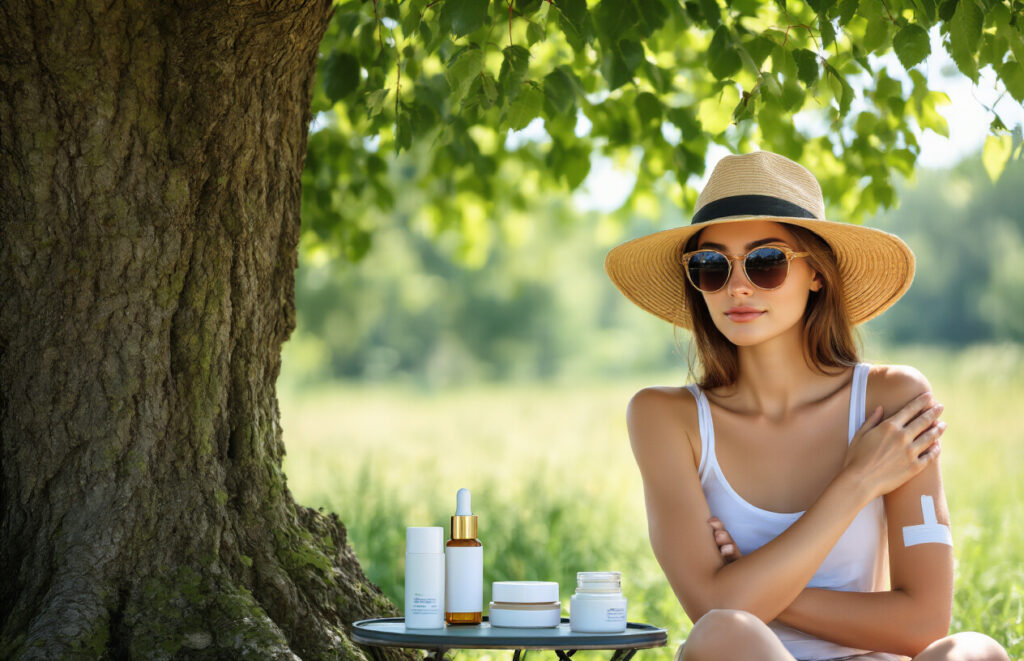
Why Most Sunscreens Don’t Provide Enough UV Spectrum Protection
Think you’re covered by your SPF 50? Rethink your thought. The majority of commercial sunscreens ignore UVA rays, the cunning ageing culprits that penetrate deeper into your skin, and only offer protection against UVB rays, which cause sunburn.
The reality? The term “broad spectrum” doesn’t fully capture the situation. Despite their marketing, many products only provide a limited amount of UVA protection. Due to FDA regulations, American brands are unable to use superior filters like Tinosorb and Mexoryl, which are used in European and Asian sunscreens.
The SPF number has no bearing on UVA protection, which is something your dermatologist won’t bring up. Even with SPF 100, you could still suffer from severe ageing damage.
Internal Sun Protection Using Particular Nutrients
Did you know that you can create your own natural sunscreen from the inside out? The internal UV defence system of your body is activated by certain foods:
- Astaxanthin: When taken daily, this potent carotenoid reduces UV damage by up to 50%, acting as an internal sunblock.
- Tomatoes contain lycopene, which works best when cooked in olive oil.
- It has been demonstrated that Polypodium leucotomos fern extract reduces sunburn cells by 84%.
For optimal protection, begin taking these supplements three months prior to the summer. They provide a vital second line of defence, but they don’t take the place of sunscreen.
The Sun Exposure Ritual That Repairs Damage
The window of magic after being exposed to the sun? Two hours. At that point, you can use this ritual to actually undo some damage:
- Apply vitamin C serum right away (20% concentration minimum).
- Niacinamide should be taken after to lessen redness and inflammation.
- Apply a repair cream that contains enzymes for DNA repair.
The majority of people err by simply applying aloe vera and forgetting about it. This has no effect on the cellular damage that is already taking place beneath the surface of your skin.
When to Go Outside to Reduce Skin Damage
Over the course of the day, the sun’s ageing rays do not strike consistently. The UV index peaks between 10 a.m. and 4 p.m., but doctors don’t promote this: From sunrise to sunset, UVA rays—the ageing ones—don’t change.
One of the special advantages of morning sun exposure is that it minimises damage and helps control your circadian rhythm. The best time to get the melatonin-regulating benefits without the ageing effects is between 7 and 9 am.
Do you want to work out outside? Plan it for after 6 p.m. or before 8 a.m. Compared to your friends who run during the day, your skin will age much more slowly.
Clothes With Exceptional UV Protection
Not all textiles are equally effective at blocking UV rays. The level of protection varies greatly:
- Only 5–10% of UV rays are blocked by unbleached cotton.
- Dark denim: Almost completely blocks
- UPF-rated technical textiles: Seek out UPF 50+, which blocks 98% of UV rays.
The thing that most dermatologists won’t tell you? Using optical brighteners, which are present in detergents like Tide, when washing your clothes can boost UV protection by as much as 200%. UV rays that are invisible are transformed into visible light by these brighteners.
Silk and glossy polyesters are great options for hot weather because they reflect heat instead of absorbing it. Regular cotton hats only offer SPF 5–10 protection; instead, get UPF-rated hats.
Inflammation-Fighting Habits That Slow Aging
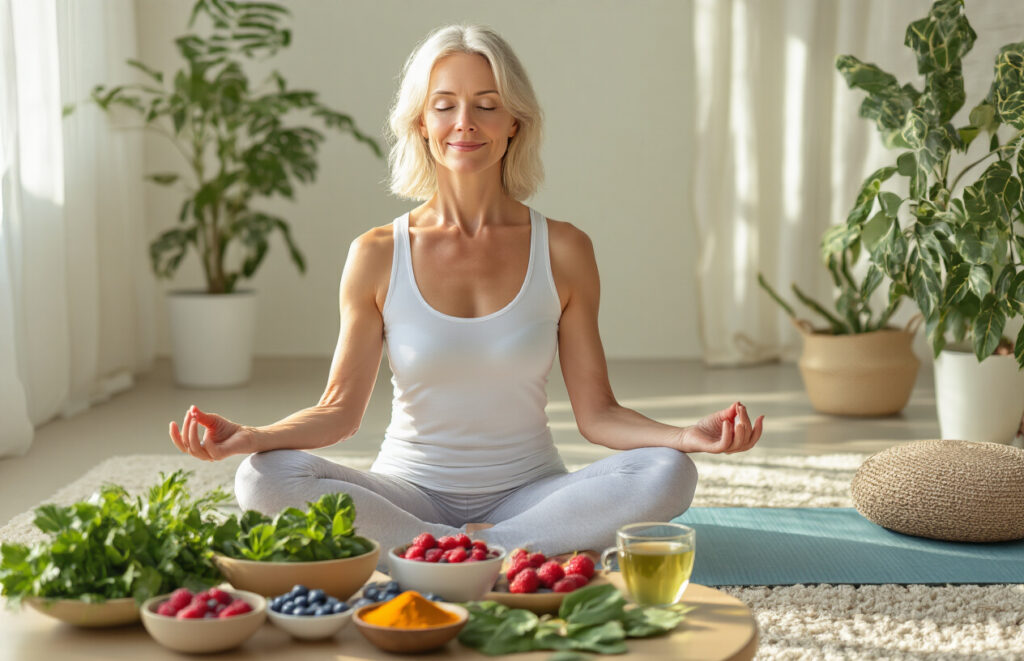
Unknown Inflammatory Foods That Hasten the Ageing of Your Skin
Even though you’re using serums and creams consistently, your skin may be being undermined from the inside out by that cunning inflammation. The reality? Your ageing process is being silently accelerated by certain foods.
Glycation, the process by which sugar binds to collagen, causes your skin to become less supple and elastic, so it’s not just bad for your waist. Fruit juices and those “healthy” granola bars? They have a tonne of it.
Free radicals produced by processed vegetable oils, such as canola and soybean, harm the cells in your skin. Almost all packaged foods contain them, even those with the “natural” label.
While not everyone is impacted by gluten and dairy, many people experience inflammatory cascades that manifest as redness, puffiness, and accelerated ageing.
Try this: For three days, replace these ageing accelerators and observe the results. Use avocado or olive oil in place of vegetable oils. Swap out sugary snacks for dark chocolate and berries. Your skin will appreciate it.
The 3-Day Reset That Makes Age Spots Visible
This isn’t some intricate detox that calls for starvation or special powders. It involves giving your body an abundance of nutrients that are specifically designed to address hyperpigmentation.
For a mere three days:
- A quarter teaspoon of turmeric and a glass of warm water should be consumed first thing every morning. To enhance absorption, add a pinch of black pepper.
- Consume at least one cup of vegetables high in sulphur each day, such as Brussels sprouts, cauliflower, or broccoli.
- Add two tablespoons of tomato paste to your meals; the concentrated lycopene is very effective.
Green tea’s catechins help lighten dark spots, so drink it instead of coffee.
Walk in the sun for 20 minutes in the early morning or late afternoon while wearing as little sunscreen as possible. Short, controlled sun exposure actually helps normalise pigmentation.
By day four, people usually notice that their dark spots are less noticeable. If you prolong it past three days, the effect intensifies.
Stress-Reduction Methods With Verified Skin Benefits
Your face is literally smeared with stress hormones. Your skin barrier is weakened, oil production rises, and collagen is broken down by cortisol.
Before you try it, face yoga seems absurd. The lion’s pose, which involves opening your eyes wide and extending your tongue, helps to relax the muscles in your face that produce the lines that appear on your face forever. Twice a day, spend 30 seconds doing it.
Fitness enthusiasts aren’t the only ones who can benefit from cold plunging. Even a 30-second cold shower at the end of the session improves circulation to the skin and sets off a stress-adaptation response that strengthens your cells.
Certain breathing techniques have a greater effect on your skin than pricey creams. To immediately reduce cortisol levels, try 4-7-8 breathing (inhale for 4, hold for 7, and exhale for 8) for just two minutes.
The sleeping position you’re not being told about by your dermatologist? Sleeping on one’s back helps avoid “sleep creases,” which can eventually turn into permanent wrinkles. If you are a devoted side sleeper, try a special pillow.
Hormone-Balancing Approaches for Youthful Skin
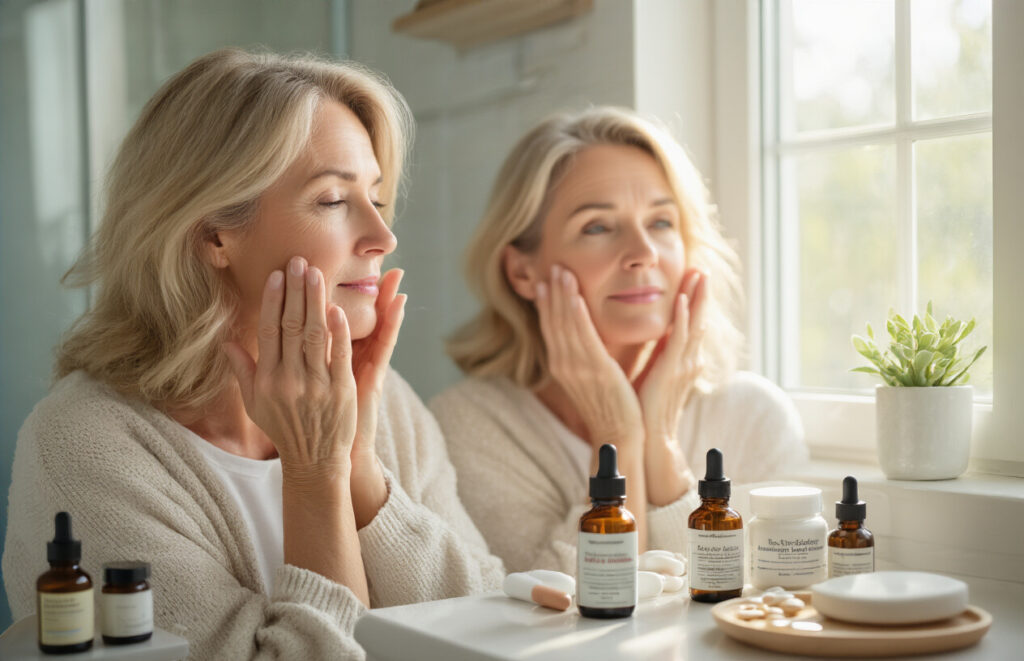
A. Organic Substances That Enhance Oestrogen Levels
Your oestrogen levels have a significant impact on the appearance of your skin, but the beauty industry won’t tell you this. Collagen production can decrease by as much as 30% during the first five years of menopause when oestrogen levels decline.
However, phytoestrogens are more effective than pricey creams. With no negative side effects, these plant-based substances subtly increase your body’s oestrogen activity. Lignans, which are found in flaxseeds, aid in regulating oestrogen levels. Within weeks, skin elasticity can be improved with just two tablespoons per day.
Try including tempeh or edamame in your meals to incorporate soy isoflavones. Additionally, red clover extract has four important isoflavones that help skin retain moisture, so don’t ignore it.
B. The Relationship Between Testosterone and Skin in Men and Women
Unexpected! Not just a “male hormone,” testosterone is essential for everyone’s skin health. When properly balanced, it speeds up wound healing, encourages the production of collagen, and helps maintain skin thickness.
Skin elasticity is 23% higher in women with optimal testosterone levels than in those with imbalances. Declining levels in men frequently manifest as more sagging and lifeless skin.
Zinc-rich foods like oysters, pumpkin seeds, and grass-fed beef give your body the raw materials it needs to synthesise hormones, and DHEA supplements (25–50 mg daily) can naturally support testosterone production.
C. Easy Blood Tests That Show Which Factors Accelerate Ageing Accelerators
Basic hormone panels that overlook important markers are usually run by the medical establishment. Demand these tests:
Unbalanced free T3/reverse T3 ratios can cause skin to age quickly.
DHEA-S: Usually begins to deteriorate in your 30s.
For the best skin health, the ratio of oestradiol to progesterone should be 10:1.
Cortisol rhythm: Stress patterns destroying collagen are revealed by morning and evening measurements
Unless you specifically ask, most doctors won’t recommend these.
D. Adaptogens That Promote Hormonal Equilibrium Without Drugs
Adaptogens, which are hormone balancers found in nature, are remarkably effective at rejuvenating the skin.
By lowering cortisol by up to 28%, ashwagandha shields collagen from deterioration brought on by stress. For noticeable effects within 60 days, take 300–600 mg per day.
Rhodiola rosea enhances the skin’s ability to use oxygen while assisting in the normalisation of oestrogen. This results in the desired “glow” that everyone seeks.
A teaspoon of maca root powder taken daily can improve skin tone in a matter of weeks. It supports the balance of both testosterone and oestrogen.
Holy basil, also known as tulsi, promotes a healthy hormone metabolism while lowering inflammation, which speeds up ageing. Try it in place of tea every day.
Around week six, when most people give up on natural remedies, the adaptogen-induced skin transformation usually starts.
The Movement Practice That Reverses Cellular Aging
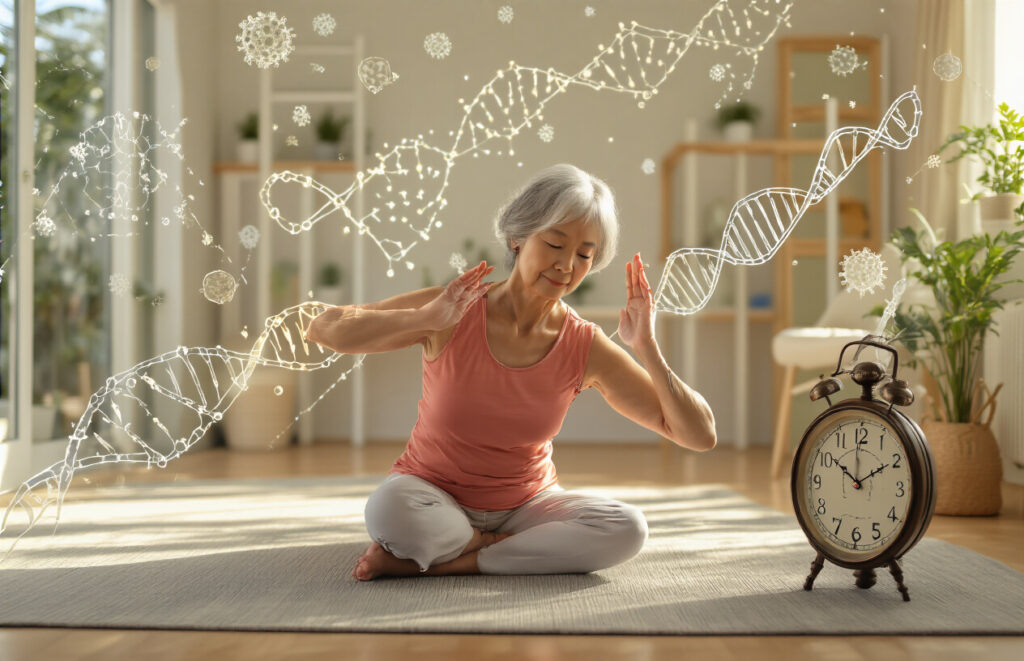
Why Conventional Exercise Might Not Be Sufficient
Spin classes, dumbbells, and treadmills? They are good, but they are lacking a vital component.
The microscopic mechanisms that determine how quickly your cells age are rarely addressed by standard workouts, which focus on cardiovascular and muscular health. To activate longevity pathways that traditional exercise just cannot, your body requires certain movement patterns.
The issue? The majority of workout regimens are too one-dimensional. They increase your strength or stamina, but they don’t activate the cellular stress responses that instruct your body to fix damaged DNA and remove waste from your cells, two essential functions for maintaining your youth.
The startling reality is that, in spite of their toned bodies, many dedicated gym-goers are still ageing quickly at the cellular level.
The Daily 7-Minute Routine That Turns On Genes Associated With Longevity
This isn’t a difficult workout. Anyone can perform this set of tiny movements:
Rapid squats (which activate AMPK pathways) for 30 seconds
60 seconds: Autophagy-stimulating slow, deliberate twisting motions
90 seconds: Deep breathing during static holds (causes sirtuin to be produced)
Bouncing gently for 60 seconds (improves lymphatic circulation)
30 seconds: Exercises for the eye muscles that increase blood flow to the tissues of the face
90 seconds: Undulations in the spine (increases neural plasticity)
Tension-release cycles (which lessen the effects of cortisol on cells) last 30 seconds.
Researchers at the Buck Institute for Research on Ageing discovered that this particular sequence, without the hunger, activates the same genes linked to longevity as calorie restriction!
How Certain Breathing Patterns Cause Hormones in Young People
Your breath is your hormonal system’s covert remote control.
It’s not exaggerated. Your endocrine system is directly impacted by specific breathing patterns, which cause the release of DHEA, human growth hormone, and other substances that preserve cellular integrity.
These three patterns alternately form the key:
Equal counts of inhale, hold, exhale, and hold are used in box breathing, which raises growth hormone.
Making exhalations twice as long as inhalations lowers cortisol levels.
Breath holds: Brief, regulated pauses following exhalation that promote the formation of stem cells
It has been demonstrated that following these patterns for just four minutes each day increases telomerase activity, which is the enzyme responsible for repairing the protective caps on your DNA.
The Exercises Particular to the Face That Improve Sagging Features
Put costly creams out of your mind. There are 57 muscles in your face that require specific attention.
The “Facial Flex” method naturally lifts and tones facial features by combining isometric contractions with particular acupressure points. The technique improves circulation to the skin’s surface while fortifying the facial muscles.
Three moves that can change the game:
The Eyebrow V: Raise your brows against resistance while pressing your index fingers against your outer eyebrows.
Smile and press your fingers against the nasolabial folds for eight seconds to sculpt your cheeks.
Jawline Definer: Push the tongue to the roof of the mouth while creating resistance beneath the chin.
The effects of these exercises are long-lasting. According to research, they produce a natural, long-lasting lift by increasing facial muscle tone by up to 32% when performed regularly for eight weeks
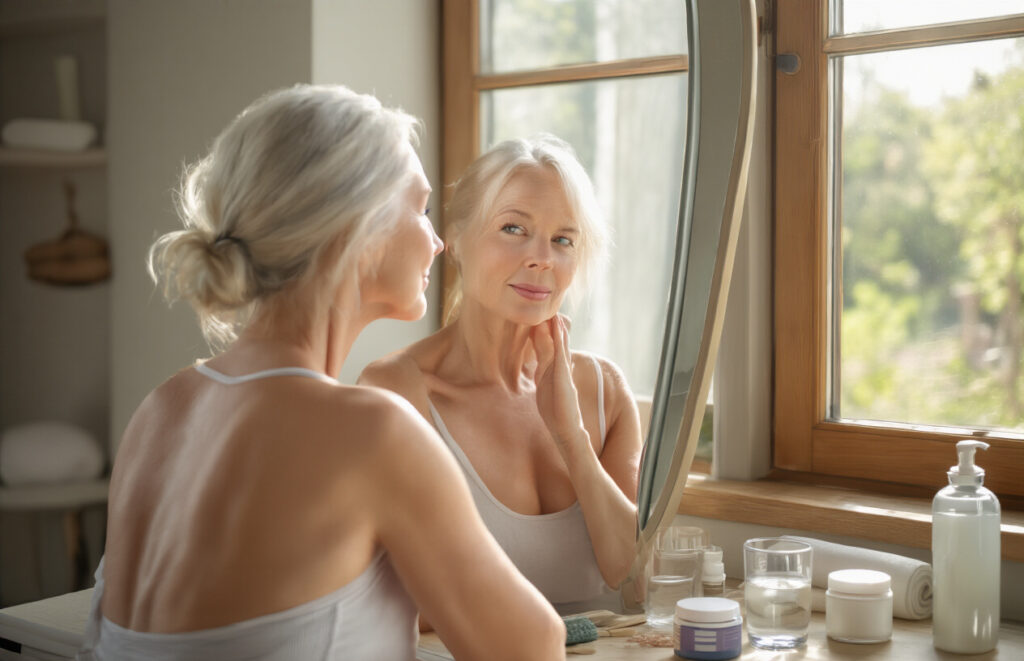
My Zone
During my CMA Intermediate exams, I met a gentleman who instantly stood out—not because of stress or wrinkles, but because of his youthful energy. To my surprise, he was nearly 60 and had a daughter my age. What began as a casual conversation soon grew into a family friendship, and I became deeply curious about his secret to looking so young and vibrant.
Over time, I often spoke to his daughter, who revealed the quiet wisdom behind his lifestyle. He never wasted energy comparing himself or his family with others. Instead, he focused on his own milestones, celebrated his family’s progress, and lived in a state of peaceful contentment. Comparison steals joy—contentment preserves youth.
I’ve shared before about the power of appreciating others—it costs nothing, yet creates joy, harmony, and positivity around us. This gentleman practiced it every day. By spreading cheer and acknowledging even the smallest good in people, he built an aura of warmth and happiness. Appreciate more, compare less—your skin will thank you.
The truth is, you can’t stop ageing—but you can certainly delay its signs by living with cheerfulness, kindness, and peace of mind. Those who age gracefully are the ones who stay happy, spread happiness, and carry no grudges. After all, true anti-ageing is not about looking young, but feeling timeless.
Frequently Asked Questions (FAQs)
Q1. Can diet alone really improve skin elasticity and slow ageing?
Yes. Consistently eating collagen-boosting foods like eggs, garlic, onions, citrus fruits, and leafy greens helps your body build stronger collagen structures. Within 3–12 weeks, many notice firmer, healthier skin without relying heavily on expensive creams.
Q2. Are natural remedies as effective as expensive anti-ageing products?
Often, yes. Ingredients like raw honey, yoghurt, green tea, and avocado oil provide hydration, exfoliation, and antioxidant protection—at a fraction of the cost. Many of these outperform costly serums because they work at a deeper cellular level.
Q3. How important is sleep for anti-ageing?
Sleep is one of the most powerful anti-ageing tools. During deep sleep (especially between 11 PM and 2 AM), the body boosts collagen production and repairs cellular damage. Poor sleep quality accelerates wrinkles, dullness, and loss of firmness.
Q4. Can stress really make you look older?
Absolutely. Chronic stress raises cortisol, which breaks down collagen and weakens the skin barrier. Simple practices like breathing exercises, cold showers, and face yoga reduce stress hormones and keep skin youthful.
Q5. Do I need supplements for anti-ageing?
Not always. While supplements like astaxanthin, zinc, or adaptogens (ashwagandha, maca root, rhodiola) can help, the foundation should be a balanced diet, proper sleep, stress management, and mindful habits. Supplements work best as supportive tools, not replacements.
“Want more research-based anti-aging tips? Visit National Institute on Aging.”
Final Thoughts
Anti-ageing isn’t about chasing impossible promises—it’s about building habits that help you age gracefully and confidently. Expensive creams, injections, or treatments may give quick fixes, but the real magic lies in consistent lifestyle choices: nourishing foods, restful sleep, stress-free living, and a grateful, positive mindset.
When you stop comparing yourself with others, appreciate more, and live peacefully, you not only look younger—you feel timeless. Remember: the most effective anti-ageing routine doesn’t always come in a bottle, but from the way you treat your body, mind, and soul every day.




